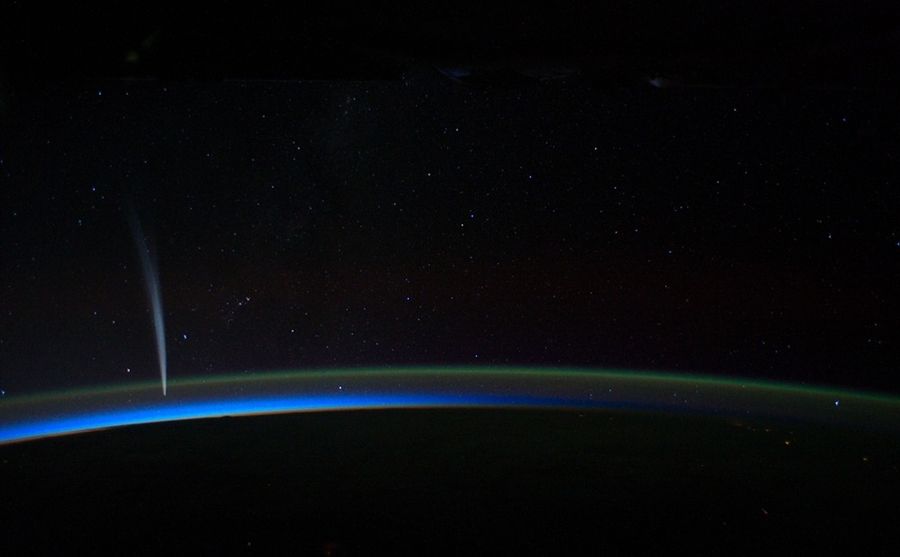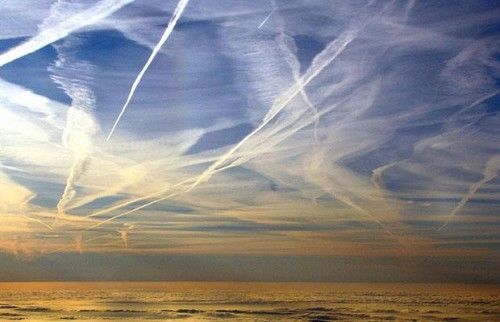OK, it’s time for more weirdness. As we covered in a recent SOTT Report, accounts and recordings of strange noises heard all over the world went semi-viral on YouTube in January this year, and some are even receiving mainstream media coverage. Some YouTube pundits claim they’re all faked, a couple of scientists say they’re ‘normal’ and nothing to worry about, and many are freaking out as the phenomenon is feeding the ‘2012-apocalypse-oh-my-God-we’re-all-gonna-die’ hysteria. So what’s really going on?
The hype appears to have started with these videos from Kiev, Ukraine, posted on 3 August and 11 August 2011, respectively. (Although, as we’ll see later, these were not the first accounts.)
(See here for a translation of the uploader’s account of the sounds and analysis and here for a summary of the associated thread, with additional analyses and accounts.)
Dozens of videos have been uploaded since then, some obviously faked, others perhaps not. For example, at least 28 videos posted in the months since Kiev obviously use the sound from the original video played over random video footage, sometimes with staged ‘Oh-my-God-what-is-that?’ dialogue. And, no, as far as I can tell, none of them use samples from the films Red State or War of the Worlds, as some have claimed. The similarity is striking (trumpet-like blasts, metallic rumbles and such), but truth has been known to resemble fiction. And it wouldn’t be the first time that similar strange noises have been heard, both in recent times and the murky depths of history recorded in myth and legend.
From the trumpets of Revelations, the Old Testament’s Jericho, and Islam’s Israfel, to the Norse god Heimdall, the Roman Triton, and the Arthur legend, all of these images of blasting horns heralded mass destruction and ‘End Times’. And often associated with such sounds were images of ‘fire-breathing’ dragons and gods bringing death and destruction to earth with their thunderbolts, rocks, fire and brimstone. As astrophysicists Victor Clube and Bill Napier show in their books Cosmic Winter and Cosmic Serpent, these are all depictions and memories of ancient encounters with comets, from a time when such heavenly occurrences were much more frequent in our solar system. And for those who experienced them, it may as well have been the ‘End of Times’, albeit without the religious/metaphysical overlay.

An eighteenth-century artist's depiction of the Ark of the Covenant and seven priests with rams' horns at the siege of Jericho. Biblical overlay of naturally recurring catastrophic events
So what can we say about the sounds heard in these recent videos? Are any of them legitimate, and if so, what could be causing them? Let’s start with the second of the Kiev videos. This Ukrainian news report seemingly debunks the video, albeit in the fashion typical of mainstream media: condescendingly and not very rigorously. The few people they interviewed from the area didn’t hear anything and a simple explanation is offered: routine construction work (which, incidentally, sounds nothing like the Kiev video). Needless to say, the reports of a few witnesses who did not hear anything do not negate the claims of those who did, and a couple of locals have responded to the video saying that they did, in fact, hear the sounds. And given the tendency of folks to normalize strange occurrences, their claimed impressions strike me as valid. One got bored, closed his window, and went to play video games; and the other just thought they were building a bridge somewhere.
Other than that, there hasn’t been a lot of detailed analysis, so it’s hard to say one way or the other. But there’s one thing you can take to the bank: reports of these noises were just getting started. Not counting the obvious fakes, August saw around 14 such videos, including a strange hum in France on the 14th and a whistling, wind-like sound heard at a Tropicana Field baseball game in Tampa, Florida on the 23rd. The phenomenon dropped in the following months: September saw 13 videos, October – 9, November – 4, and December – only 2. Then things really kicked off in January with at least 75 videos. The recorded sounds include a variety of hums, industrial-sounding scrapes, squeaks, and rumbles, as well as the familiar Kiev ‘trumpet’ blasts. But there were also several videos from before Kiev, including a 20-minute event filmed in Florida in March. And the phenomenon continues, with the most recent report coming from Ireland this February.
Some debunkers cite the inspiration for the ‘hoax’ as being the release of Kevin Smith’s film, Red State, which premiered in September 2011, just weeks after the Kiev video, and features similar apocalypse-inspired trumpet sounds. But even if we were to assume that this entire recent spate of videos is a collective hoax (or viral ad campaign), it doesn’t change the fact other strange sounds have been occurring in the past year or so, heard by multiple credible witnesses, recorded, and reported by major media outlets. In fact, if I were to get conspiratorial, I might even take a page out of my last installment and suggest that the sheer number of fakes are akin to the fake CIA commies planted in leftist groups in the sixties: a diversion with the intent of trivializing the real phenomena, priming the public to view it with an attitude of ridicule (or mindless hysteria), and effectively blocking any actual analysis or research into the possible causes and implications.
Strange low-frequency humming sounds have been reported all over the world since the early nineties, from New Zealand and the UK, to Canada and the US. Perhaps the most famous is the Taos hum in New Mexico. Strangely, while thousands have reported experiencing the irritating, grating groan, not everyone can hear it. For those who can, some report feeling it resonate in their bodies. For the man in the video linked to above, the sound even got stronger when he experimented by entering the copper mines of the region. Interestingly, hearers of the hum claim that it is more intense at times of US wars, and military ELF communication coincidentally started up in the late eighties. Also, the earth’s crust is allegedly thin under Taos, causing one hearer to speculate that they were hearing mantle movements. Two scientists studying the problem speculated that the sound could be an acoustic transduction of radio frequencies, which as we’ll see, may be pretty close to the truth. But as far as I can tell, there are no recordings of these hums, just reports of subjects hearing them. That seems to have changed.
Since February 2011, residents of Windsor, Ontario, (including their city Councilor, Al Maghnieh) have experienced a similar rumbling hum, and no one can figure out what it is. By September – after the first spate of YouTube uploads – it had just gotten louder, rumbling both eardrums and walls, frustrating and demoralizing the local population, for whom answers have not been forthcoming. It intensified again this January, again matching the frequency of videos uploaded worldwide. So far, the finger has been pointed across the border, to Zug Island, Michigan, a heavy industrial area. If Zug is the source of the hum, Maghnieh asks some interesting questions here:
Having learned this information now, it really warrants several questions. Did something change on Zug Island in the last year? Did U.S. Steel Company change their manufacturing process after consolidation? Did industry bring in some new machines? These are all questions I’m hoping we can get some answers to soon.
Or perhaps, if all the recent worldwide accounts are to be believed, something of a different nature has changed, causing certain sounds to be more audible? I find it interesting that the hum began in early 2011, around the time of the Florida videos, and intensified in September and January, which have the most YouTube uploads by my count. Coincidence?
Take North Battleford, Saskatchewan, where dozens of residents (including Mayor Ian Hamilton) heard strange scraping, trumpet- and foghorn-like sounds in the atmosphere in mid-January this year. A local news investigation prompted University of Saskatchewan professor Jean-Pierre St. Maurice to comment that “Somehow they are picking up noise from an environmental antenna that happens to be there. That is electromagnetic noise. Nice, natural noise.” St. Maurice points to the aurora, which some witnesses have described hearing as a hissing noise. (See Mike Baillie’s Exodus to Arthur, p. 179, for more on the phenomenon). That such trumpet sounds are a real phenomenon and not just a hoax was further supported by this La Paz, Mexico, news report. The sounds were even recorded by a weather station. Meteorologists put it down to a cold front.
The SOTT team asked the Cs about the phenomena back on 20 August 2011. Here’s what they had to say:
Q: (Psyche) I wanted to ask about the strange sounds around the world, especially in Kiev? (L) Oh yeah, the strange sounds like a trumpet in the sky.
A: Mostly radio type waves due to increase of solar system energy input.
Q: (L) How can you hear radio waves? Why are people hearing these things?
A: Interaction with other EM factors on planet similar to amplification and wave conversion.
Q: (Ark) Something in the Earth changes the frequency and starts vibrating. (Scottie) Or maybe like some kind of modulation where the frequencies add and subtract, and you end up with audible frequencies. (Ark) No, I think it’s a secondary vibration. But then these radio waves should be detected by radio devices. And the question is, why there is nothing special? We have a lot of radio devices, and they do not detect these waves. (L) I wonder if those circles that people are always seeing on radar devices have anything to do with it? (L) Well, the question is, if they were detecting something, would they even tell us? But then there are radar devices at every airport. Surely people would say something. (Ark) Are these low frequency radio waves?
A: Yes. ELF.
Now, ELF radio frequencies can be given off by lightning and astronomical bodies. It turns out they can even be heard by the human ear via the process described by the Cs and Dr. St. Maurice. When witnesses of comets and fireballs reported sounds accompanying the stunning visual displays (sometimes before they even saw the fireball), scientists dismissed them as impossible, the speed of sound being much too slow for such sounds to reach the witnesses before visual identification. But as Baillie points out:
The plasma trail from a large fireball may generate Extra Low or Very Low Frequency radio emissions; if an observer happens to be standing beside a suitable object (or perhaps if he or she is wearing a suitable object like glasses or headgear) [HK: Keays and Baillie note that almost any object can serve the purpose], that object can act as a transducer for the electromagnetic signal – thus the observer actually ‘hears’ the incoming fireball as it enters the atmosphere, before seeing it. The technical name for this phenomenon is ‘geophysical electrophonics’. What do observers claim that they have heard? It appears that the sound is most like hissing, shooshing, popping, wooshing or clicking … In a recent article [Colin] Keays provides a real gem: two Chinese researchers, Zhuang and He, have found in old reports the statement that the very bright Comet De Cheseaux in 1743 produced sounds when it appeared. Obviously we cannot hear across the vacuum of space, so the likely explanation, according to Keay, is that particles from the comet’s tail must have been interacting with the magnetosphere. Apparently sometimes we can hear comets! (Exodus to Arthur, pp. 179-180)
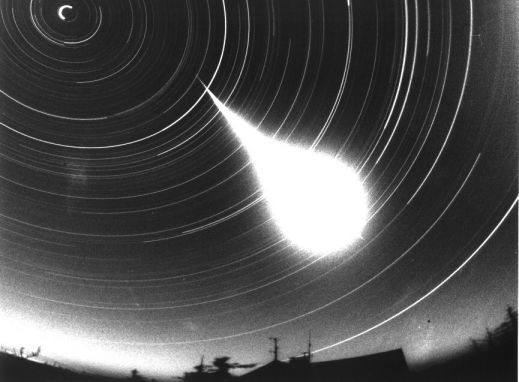
The plasma discharge of comets and meteors can be heard before they are seen
Keays and Baillie should read some of James McCanney’s work. The plasma discharge of an active comet, according to the Electric Universe theory, can form an electrical-current connection with earth’s atmosphere. Perhaps it is this discharge phenomenon (remember, lightning is also such a discharge) that is responsible for ‘hearing’ comets? (In his list of phenomena associated with approaching comets, McCanney lists colorful auroras, trumpet- and whistle-like sounds.) Incidentally, the sounds resemble those heard before the perhaps related explosions of transformers that we’ve covered on SOTT. And some of the videos above include similar flashes of light, suggesting electrical phenomena, and the strange sound heard at the baseball game in Florida was apparently preceded by a lightning storm, causing some to speculate that the stadium’s PA system went haywire as a result. Maybe it was amplifying similar ELF waves?
But if the majority of these sounds aren’t caused by obvious lightning or fireballs, what else could it be? Obviously something has changed, so what has made these once rare sounds seemingly so common? Either something else is coming in from ‘up there’ or something has changed ‘down here’. Maybe both. Perhaps coincidentally, earth-directed CMEs occurred multiple times in early August, as well as on 17 January and 23 January (prompting the “strongest radiation storm since 2005”), the times of peak uploads on YouTube. But overall, this latest solar cycle apparently hasn’t been that spectacular. So what’s up? Let’s take a look at some more comments from the Cs and see if we can come up with possible explanations for what exactly is changing in our planetary and solar system environment. It’s a bit tangled, so I’m going to take it one thread at a time and then try to tie it all together at the end.
Sol’s Little Brother
On 17 January 1997, the Cs offered up this for discussion:
A: … What do you suppose happens when the mantle stops, or slows, and the crust does not?
Q: (Laura) Frank had a dream about this the other night, too. (Terry) About the mantle slowing? Okay, if the mantle slows and the crust doesn’t … (Laura) It’s like walking around the room, carrying a bowl of soup, and then stopping … (Terry) It sloshes over because the crust keeps moving … water in all of the oceans is going to slosh …
A: No sloshing.
Q: (Laura) Okay, what happens when the … is it that there will be lots of earthquakes?
A: Maybe, but what is the bigger picture?
Q: (Laura) The bigger picture is that the earth changes its orbital position, velocity … (Terry) No. The bigger picture is that life on earth gets pretty well wiped out.
A: No.
Q: (Laura) It exchanges energy potentials with other bodies?
A: No.
Q: (Jan) Gravity changes …
A: Warmer …
Q: […] (Laura) So, if gravity is lessened, and it is the binder, then, everything … ohhh, I see what you’re getting at! (Jan) Yes, gravity is the binder. Without gravity, it just all falls apart …
A: Not “Falls apart,” my dear, it all “opens up!”
This was followed up on 15 April 2000 with:
Q: (L) You mentioned that if the earth’s rotation were to slow, even a minute bit, that everything “opens up” gravitationally speaking. But, this seems to be connected to solar activity, and not so much the speed of the earth.
A: The solar and earth activities are interconnected.
Let’s start with gravity. As far as most scientists are concerned, it is a constant. It never changes. Let’s assume that’s the case for now. How might gravity ‘change’ on earth? Well, gravity is actually stronger in some places than others. They’re called ‘gravity anomalies’ and they depend on the total mass underneath your feet, and that is affected by the thickness (elevation) and mass density of the material.
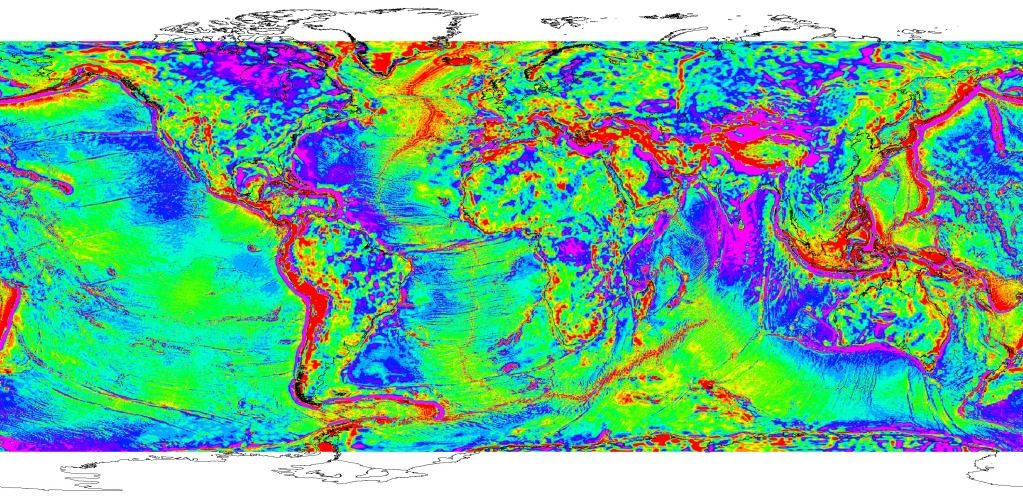
Constant, gravity? A gravity anomaly map from NGU, the Norwegian Society for Geology
One factor that can cause such a ‘change’ in gravity actually has to do with the mantle – the viscous, rocky layer between earth’s core and crust. Hotter mantle is less dense, so elevated heat flow results in lower gravity. (Incidentally, this could explain the lower gravity detected in Canada.) It’s commonly believed that heat from the core causes the mantle to convect in plumes, like a pot of water on the stove. The heated mantle rises from the core to the crust, which it interacts with, resulting in such dramatic changes as tectonic plate movement, mid-plate volcanism, and crustal reorganization as rising magma cools to become new crust. It’s also commonly believed that mantle plumes called ‘hotspots’ are responsible for regions of volcanically active oceanic ridges. But strong plumes aren’t always located where they ‘should be’, leading the authors of one relatively recent paper on the subject to write: “Such observations tend to preclude the use of a single hotspot/ridge interaction model and stress the need for additional observations in various plume/ridge configurations.”
Caltech scientist Don L. Anderson suggests that this ‘bottom-up’ picture, where the mantle is active and the plates passive, may not be the right way to look at it. It ignores the influence of the pressure from the plates above and the extreme viscosity of mantle near the core-mantle boundary (CMB), making such dramatic plumes unlikely to occur. Anderson presents a model where the upper thermal boundary layer near the crust takes on the active role. The cold surface drives the passive convection of the mantle. Even then, Anderson writes:
Hot regions of the lower mantle will heat the upper mantle and may control, to some extent, the locations of supercontinents and long-lived subduction zones. Even if the mantle is irreversibly chemically stratified into two or more layers, the deep layers will have an effect on geophysical observables. Regions of high elevation, tensile stress and volcanism will tend to be above low-density regions of the deep mantle unless counteracted by gravitational forces in the plates themselves and at plate boundaries.
So, as is usually the case when you start digging into any accepted science dogma, I’m finding that things aren’t as cut and dried as they’re presented in the textbooks. Core-mantle effects seem to have some influence on activities and structure of the crust, but the opposite is just as likely. It goes both ways. But even if we don’t know for sure if the tail wags the dog or vice versa, some possibilities still start to take shape. The processes of mantle convection, plate tectonics, volcanism (as we’ve seen in part one of this series, undersea volcanoes may have something to do with ‘global warming’ and climate change in general), and crust formation, among others, are all tied together. Depending on the direction of causation, some change in the core (or crust) would spark a chain reaction of feedbacks, and gravity effects will be a part of it. Slower, cooler mantle will have more gravity, while hotter, less dense regions will have less. As to the possible effects of any such ‘disturbance in the force’, we’ll see some possibilities further on.
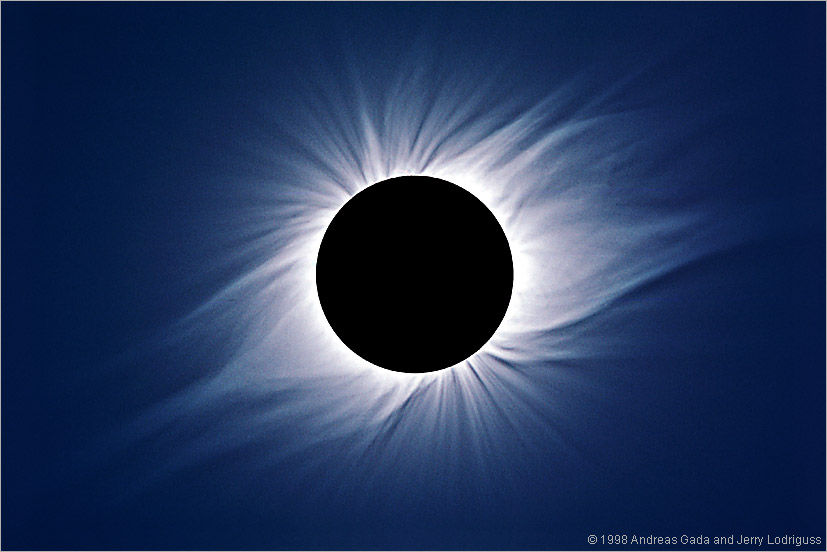
The corona produced by a total solar eclipse. Maybe the ancients were wary of such events for good reason?
However, things might not be that simple (ha!) when it comes to gravity changes. In their book, Who Built the Moon?, Christopher Knight and Alan Butler share some remarkable findings relating to gravity. For example, in the 1950s, French engineer Maurice Allais discovered something amazing, completely by chance. He was investigating a possible link between gravity and magnetism, using a Foucault pendulum. One day there happened to be a solar eclipse, and the pendulum started rotating backwards (!). The results were verified by Allais, as well as other scientists with no connection to him, in the years after. By current science dogma, this is impossible, therefore it mustn’t have happened. But perhaps connected, in 1995, Indian scientists D. C. Mishra and M. B. S. Rao observed a small and sudden drop in the strength of gravity during a solar eclipse using a gravimeter. Again, other scientists have apparently detected similar effects (Knight & Butler 2007, 37 – 39). So, perhaps the Cs were being quite literal. But what could the cause of these changes be?
I find it fascinating that the gravity changes observed by Allais, Mishra, Rao, et al., occurred during solar eclipses. As we know from James McCanney’s work, during a new moon, the moon temporarily forms an electrical alignment between the earth, moon, and sun. The moon blocks the electrical connection between the sun and earth, causing us to get hit by a strong burst of solar energy when it passes out of alignment and triggering extreme weather effects. A total solar eclipse will most likely have the most extreme effects. It’s also interesting that Allais was studying a link between gravity and magnetism. Here’s what the Cs said on 18 July 1998:
Q: (L) Now, one question that we were discussing earlier is: how can the close approach of the companion star cause an increase in the Sun’s gravity when there is no reason why it should change anything, since gravity is a function of mass?
A: But do you really know all there is to know about gravity?
Q: (A) No, we don’t know. But, does this mean that this will be an effect that does not follow from the theory of gravity that we know already?
A: Gravity is the life force that binds all realities as one.
Q: (L) What are the mechanics of the increase in the Sun’s gravity? What is going to cause this?
A: In order to understand this, you would need a reworking of the theorem.
Q: (L) Can you help us in this reworking of the theorem?
A: Waves. […]
Q: (A) What wave, a gravitational wave, or an electromagnetic wave, or some other wave? What wave?
A: Arkadiusz, how do these intersect?
Q: (A) Gravity and electromagnetic?
A: Yes. And others.
Q: (A) How they are described within a theory, or how they intersect in space when they come together?
A: Both.
Q: (A) Okay, why does this increase in the Sun’s gravity have anything to do with electromagnetism? We were told that the Brown star will not radiate any radiation, so, in particular, no electromagnetic radiation. So, where does electromagnetics come in? I do not understand…
A: Gravitational pull incites electromagnetic impulse.
While it may or may not be related to the Cs’ linking of electromagnetics and gravity, in McCanney’s model, the gravitational pull of the sun on objects entering the solar system (comets) results in them cutting through regions of electric charge, in turn causing them to ‘ignite’ and discharge the solar capacitor. This relates to the remark from the Cs above that the sun and earth activities are interconnected: changes in the sun’s output affects the earth (and the whole solar system), and some specific changes in celestial bodies of the solar system affect the capacitor and thus the sun (which is why discharging comets often prompt CMEs, to give just one example).
But this excerpt brings us to another point: the possibility that our sun has a companion.
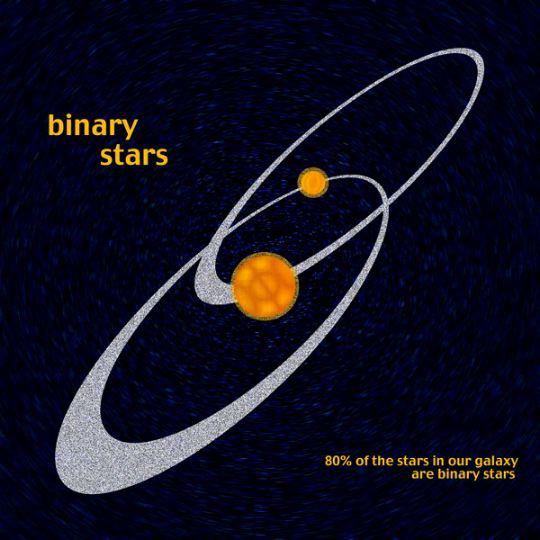 In fact, binary star systems are quite common, if not the rule in our galaxy. Physicist Peter Eggleton quotes Petrie’s research from 1960 that 52% of star systems showed evidence of multiplicity (the real number theoretically being much larger, due to limits to measurement accuracy). He also writes, “After considering unseen companions [e.g. brown dwarfs], Poveda et al. (1982) concluded that nearly 100% of stars are in binaries, including long as well as short periods” (Eggleton 2006, p. 14). In his 2007 paper, ‘The Incidence of Multiplicity Among Bright Stellar Systems’, Eggleton et al. rate the multiplicity rate of 4649 visible stars (magnitude 6 or less) at 40%. This observed incidence suggests a true rate of at least 65%. But as Eggleton points out, even the 30-35% that he classifies as ‘single’ systems could well contain undetected companions.
In fact, binary star systems are quite common, if not the rule in our galaxy. Physicist Peter Eggleton quotes Petrie’s research from 1960 that 52% of star systems showed evidence of multiplicity (the real number theoretically being much larger, due to limits to measurement accuracy). He also writes, “After considering unseen companions [e.g. brown dwarfs], Poveda et al. (1982) concluded that nearly 100% of stars are in binaries, including long as well as short periods” (Eggleton 2006, p. 14). In his 2007 paper, ‘The Incidence of Multiplicity Among Bright Stellar Systems’, Eggleton et al. rate the multiplicity rate of 4649 visible stars (magnitude 6 or less) at 40%. This observed incidence suggests a true rate of at least 65%. But as Eggleton points out, even the 30-35% that he classifies as ‘single’ systems could well contain undetected companions.
Also, King et al. analyzed a group of 5 star clusters (totalling about 2675 stars), to determine how many binary systems they contained (the clusters ranged from 7.5-50% binaries), and what the initial binary rate would have been after the stars formed and before some systems ‘lost’ their companions. In their model, an initial rate of 73% binaries best explains current conditions in these star clusters, but only for the range of orbits they were able to study in all five clusters (62-620 AU), and they acknowledge that they can’t discount an even higher initial number, if more binaries exist below the observed range.
So, if McCanney, Poveda, and Eggleton are right about the incidence of binary systems, Sol should probably have one (if it wasn’t lost at some point in the past). If it’s still there, since it’s not visible, chances are it would be a brown dwarf. This is what the Cs suggested on 3 August 1996 and 4 July 1998. (See here for the full sessions.)
But keep in mind that there are dissenting views. For example, Deepak Raghavan et al. analyzed a sample of 454 “solar-type” stars within 25 parsecs of the Sun and found that the majority (about 54%) were single-star systems. They found that the bigger the mass of the star, the more likely it is to have a companion. Clark et al. summed up the findings by writing that stars up to 40 times the mass of the Sun exist in binaries about 75% of the time, down to 20% for stars less than 0.1 the mass of the sun (that includes brown dwarfs).
In the region closest to our sun, the only systematic, observational research on the subject seems to have been done by RECONS (Research Consortium on Nearby Stars). Of the star systems within 10 parsecs of our own, 29% have 2 or more observed stars. As the RECONS people point out, this number may seem low, because 73% of the stars identified are red dwarfs (less than half the mass of the sun and listed as “M” types in their chart). Red dwarfs are less likely to have companions than larger stars, so the 29% figure probably isn’t representative for all star types in our cosmic neighbourhood, especially if we take into account the difficult-to-detect brown dwarfs.
Moving on, I already included this next excerpt from 22 February 1997 in part two of this series, where I mentioned the idea that changes in cloud formation can cause a change in angular momentum of the earth, thus a change in its rate of rotation. (See here for a short discussion of angular momentum.) On this point, we recently carried an article reporting that average cloud height, which is positively correlated with global temperature, has been dropping for approximately the last decade, something SOTT has been pointing out for a while now – high-altitude phenomena like jet contrails are appearing lower and lower, giving way to widespread belief in ‘chemtrails’. In other words, the atmosphere (upper and now lower) appears to be cooling. (See this as well, which brings more confirmation to something else I wrote in part two: global warming stopped in 1997.)
A: Climate is being influenced by three factors, and soon a fourth. […] 1) Wave approach. 2) Chloroflorocarbon increase in atmosphere, thus affecting ozone layer. 3) Change in the planet’s axis rotation orientation. 4) Artificial tampering by 3rd and 4th density STS forces in a number of different ways. […]
Q: (Jan) What causes the change in the axis?
A: By slow down of rotation. Earth alternately heats up and cools down in interior.
Several factors affect earth’s angular momentum, and thus its length of day (or rotation): atmospheric angular momentum (movement of the atmosphere around the globe, including differing wind speeds and directions), oceanic angular momentum (mass distribution of earth’s oceans), hydrological angular momentum (estimated based on the distribution of all the other water on the continents, including snow, ice, ground moisture, etc.), and core angular momentum (the electromagnetic coupling of the core and mantle). Changes in any of these factors lead to observed changes in length of day and ‘polar wandering’. (LOD and polar wander are both governed by the mass distribution inside earth.) So a ‘slow down of rotation’ is definitely tied to a change in the planet’s axis orientation (polar wander), and core-mantle dynamics seem to play a role. The topography, viscosity, gravity, and electromagnetism of the core and core-mantle boundary (including the factors mentioned above, like atmosphere) can all act as torques, and are responsible, to varying degrees, for transfers of earth’s angular momentum, and thus changes in rotation and polar wander.
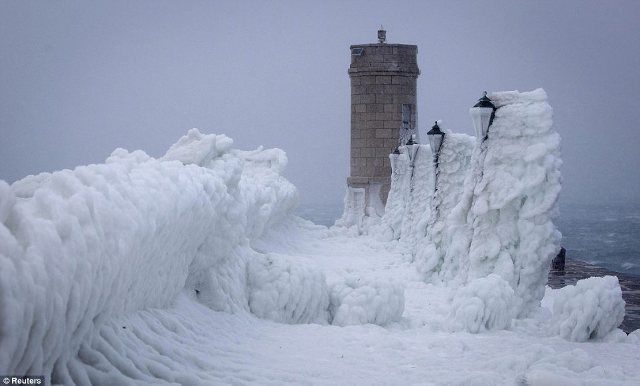
Europe experienced first-hand this month how quickly temperatures can plummet to 40 degrees Celsius below zero.
And according to Harvard earth sciences Professor Peter Huybers, “at least now we know with greater than 99 percent confidence that shifts in earth’s axis are among the factors that contribute to deglaciation.” As the article puts it: “The idea that slight shifts in Earth’s axis might have been enough to trigger the ice ages is a century old. But a Harvard earth sciences Professor Peter Huybers has finally proved it, using computer models to test competing ideas – and finding that earth’s tilting axis is the only one that works.” In another article, Huybers says, “Another important aspect to consider is that the orbital configuration we now have is almost exactly where it was 20,000 years ago, during the Last Glacial Maximum, but this time we’re near a glacial minimum.” Maybe not? The next ice age is coming sooner rather than later, according to Habibullo Abdussamatov, head of the space research laboratory at Saint Petersburg-based Pulkovo Observatory.
There may be a sun-earth core connection, too. As NASA reported last year, an “external (e.g. solar) process” may somehow affect the core and outer core, explaining a correlation between long-term surface temperatures and length of day fluctuations. This may mesh with McCanney’s theory of earth’s magnetic field: that it is not the result of an internal ‘dynamo’ process, but external electrical interactions with the solar capacitor. According to McCanney, the magnetic field is both permanent (in the solid core, as well as pockets of mantle and crust) and variable (above the surface and including electric currents that flow between earth’s inner layers). As I already mentioned above, some mainstream scientists have associated the length of day variations noticed by NASA with torques produced by electrical currents which flow between and connect the core to the mantle, but as the authors of one paper write, “less is known about [these] torques”. Perhaps the sun, and the earth’s electrical connection with the solar capacitor, is at least partially responsible for these dynamics in the core (perhaps causing its periodic heating and cooling). So if there is a connection with the sun, maybe more would be known if these scientists got up to speed on electric universe theory? And maybe we can add the magnetic field to our list of interrelated factors, along with rotation, axis, gravity, atmosphere, climate, etc.?
So, keeping all that in mind, read the following from 31 October 2001:
Q: (L) Why can’t pole shifts be predicted? Can’t we know where the new pole will end up?
A: Chaotic function here.
Q: (L) Okay, in a pole shift does the lithosphere of the planet slide on the core? (A) No. We have to be very precise. There are three possible things that would come under the name pole shift. Only one of them may come, or two, or three, okay? And these are the following – the axis of rotation [HK: polar wander] with respect to stars is changing, straightening out for instance; this is one thing; while all the rest goes with the axis, the lithosphere and the magnetic field. Second, the axis stays where it is, maybe it shifts a little bit; the lithosphere stays where it is – maybe it wobbles – but the magnetic field changes: for instance reverses. Third, axis stays, magnetic field stays, but the lithosphere is moving. So that’s three ways a pole shift can happen. And of course there are things that come together. The most dramatic one which is seen from outside is when the axis of rotation changes. The next dramatic one is probably when the lithosphere changes. And the third of unknown consequences is when the magnetic pole changes, okay? So, we want to have an understanding what will be the main change. (L) Well I guess we ought to ask an even more basic question: are we looking at a pole shift happening? That’s starting at the beginning. (A) Alright. (L) In the next ten years. Is a pole shift possible in the next ten years?
A: Yes.
Q: (L) Is a pole shift of the axis … (A) Honey, you ask if the pole shift is possible, of course it’s possible. But suppose it’s almost zero probability? ‘Is it possible’ is not the right question. ‘Is it going to happen?’ That’s a question. (L) Okay, you ask, carry on. (A) Are we looking at a pole shift during the next ten or so years with a high degree of probability?
A: Yes. [HK: Note, this session was from just over 10 years ago.]
Q: (A) In this concept of pole shift, what would be the main feature of this pole shift, of all those which we were discussing?
A: New axial orientation, and magnetic reversal.
Q: (L) That’s fairly dramatic. (A) Alright, now, change of axis or orientation of axis of rotation: can we say we would straighten up, getting almost perpendicular to the ecliptic? Or the other possibility is that it will fall down being almost parallel to the ecliptic. The third is that we’ll flip completely by 180 degrees. We know it’s highly unpredictable, but can we have a clue from which one is, so to say, dominate?
A: Perpendicularity will be restored.
Q: (A) We know the axis will change dramatically and magnetic reversal will happen. You didn’t mention a change or shift of the lithosphere alone. Can we …
A: Lithospheric shift will feature to some extent.
Q: (A) But, that means eventually that the equator will almost not change because …
A: Correct.
Q: (A) So it will just shift a little bit, but its not going to go to Hawaii? (L) Oh rats! That was my theory! Well, it was a good idea. (A) What about changes in the lithosphere: can we predict a little bit of change in geography, coming from motions in lithosphere and changes in water level?
A: Chaotic features predominate but in general it will be safer inland and in mountainous areas since less folding occurs in such locations.
Q: (A) Now, the major, the change of the orientation of the axis, what would be the main trigger, force, or activity, or what kind of event will trigger this change of the axis?
Comet Lovejoy photographed from space
A: Cometary bodies. [HK: See my review of McCanney’s book for the possible mechanics of this process; basically, the gravity of a passing comet pulls upon the lithosphere, and may cause precession of the core’s rotation, thus changing the axis of rotation.]
Q: (L) Are the planets of the solar system going to kind of shift out of their orbits and run amok? Is that a possibility?
A: Yes.
Q: (A) Due to cometary orbits alone?
A: Yes. Twin sun also.
Q: (A) When we speak about these cometary bodies, are we speaking about impacts?
A: Some will hit.
Q: (A) What would be – if any – the role played by electric phenomena?
A: Twin sun grounds current flow through entire system setting the “motor” running.
Q: (L) Does this mean that all of the different bodies of the solar system are like parts of some kind of giant machine, and once this electric current flows through them, depending on their positions relative to one another at the time this current flows, that it has some influence on the way the machine runs?
A: Yes, more or less.
And most recently, there was this follow-up on the ‘opening up’ on 6 July 2010:
Q: (L) Is there going to be a gigantic methane eruption in the Gulf of Mexico resulting in a tsunami that wipes out everybody in Florida?
A: No. The methane is a serious contributor to global “warming”, however.
Q: (L) Is oil leaking out of the ocean bed floor in the Gulf of Mexico in any other places besides through the well?
A: Yes but that is happening elsewhere as well. All part of the “opening up” phenomenon.
Q: (L) So, you mean that what we’ve speculated about sinkholes and cracks in the earth … What is causing this opening up?
A: Misalignment, or rather sliding of layers of crust of earth due to slowing of rotation.
Q: (L) Okay, what is causing this slowing of rotation?
A: We have mentioned the approach of companion star and its tendency to “ground” the system.
Followed up on 12 Dec 2010:
Q: (L) Ok, now I’ve got this other book here, Lost Star of Myth and Time – and his theory is about a companion star and the fact that the earth or the solar system is rotating around a common center of gravity, in tandem with this companion star. It is said that it is this orbit that creates the precession of the zodiac. He says that the precession is not a big wobble that the earth goes through, as it proceeds in a fairly direct course through the galaxy, but rather that it is this rotation around this common center of gravity with the companion star that produces the effect of precession. Now, is he on to something with his theory also about the precession of the zodiac?
A: Absolutely!
Q: (L) OK, he points out some interesting effects in here. First of all, he mentioned recording the speed of the earth’s rotation. They had a fixed telescope with crosshairs and they had a clock that was connected to some kind of super time clock that was extremely accurate, and they were recording exactly how long it took the earth to rotate in respect of Sirius, Sirius being a fixed point. These researchers discovered that during the period of time, when Sirius B (Sirius’s companion, which is a dwarf), eclipsed Sirius A; it actually slowed the rotation of the earth. Now, this is what their measurements showed. Something like 50 arc seconds. The slowing began a week before the eclipse, then after the eclipse the earth actually sped up. By 50 arc seconds. So, there are two weeks of effects on the rotation of the earth, caused by the eclipsing of Sirius A caused by its companion Sirius B as I remember, though I may have missed the exact time period. Now, the conclusion that he drew from this is that we are affected by being gravitationally connected to Sirius somehow. Anyhow, the conclusion that he draws is … and he also points out that it seems that Sirius is heading in our direction; we are getting closer to Sirius – so, he theorizes that Sirius is our companion star. Is he correct about that?
A: Not Sol’s companion; but look in that direction for clues to your own little brother.
Q: (L) Is it true as he speculates that when the solar system approaches this companion of ours, that it will have a psychic effect?
A: Yes. You are already feeling its approach.
Q: (L) Well, that’s one thing that this guy James McCanney said. He said that this last solar cycle – the maximum – was so long, so intense that it was evidence that something really big, had entered the solar capacitor. It was discharging the sun. And, if that’s the case, there’s probably a current flow and that means that it’s possible that at some point the earth and maybe the moon and several other astronomical bodies, will line up along the line of this flow that’s going on between the sun and its companion. And if that’s the case, could that be a little problematical?
A: Oh indeed! Yes, it is happening already. Do you not see the evidence all around the globe?
A sign of comet dust loading and a shrinking, cooling atmosphere, not government plots to spray chemical or biological agents in order to reduce the population. The result may be the same however, due to the increased possibility of dangerous pathogens riding in on comet debris.
Q: (L) Well, on that point, McCanney says that when the earth gets into this kind of situation where there’s a discharge thing going on, between the sun and another body and the earth gets involved in it, that the earth itself becomes comet-like during that time and it begins also to attract what he calls pollution events. It starts picking up all kinds of dust and stuff from outer space – and even the water volume on the planet gets increased because of this precipitating, because the planet’s picking stuff up from space. It’s growing from accumulating stuff, from acquiring stuff. And if that’s the case, we could be attracting dust loading in the upper atmosphere-regardless of whether or not we pass through cometary dust clouds. All these things that we’ve been noticing going on in the upper atmosphere – strange clouds, long-lasting contrails, extreme cooling – could be exactly as he described. There could also be atmospheric effects of these electric sheets, because he says that there are different kinds of ways of currents and layers of currents. He’s got like a five-layer model of how the electromagnetic field of the planet goes, and he says that it’s the cause of El Niño, it’s the cause of earthquakes, volcanoes , storms, changing of the Jet Stream, and just a whole host of things: it’s all electrical phenomena. He says that the electricity from the sun creates and drives hurricanes and that it is not the temperature of the water. Because he said that if it had to do with the temperatures of the water, one hurricane comes along, sucks all the heat out – then it would be impossible for another hurricane to form for a period of time. And yet you see very often, hurricane after hurricane. So, is he on to something with this theory?
A: Oh you bet!
So if the companion sun, and any wayward comets it has catapulted into the solar system, are entering and discharging the solar capacitor, this could have a number of effects on earth, including:
- atmospheric: dust loading of the atmosphere, perhaps affecting cloud formation;
- hydrological: hydrological: positive and negative feedbacks for warming and cooling temperatures, leading to changes in evaporation and precipitation;
- electromagnetic: electrically influenced extreme weather and other effects (ELF radiation, strange sounds, transformer explosions, heating of the core, etc.);
- gravity: gravity anomalies caused by resulting changes in the core and mantle;
- crustal anomalies (like volcanism and perhaps outgassings and sinkholes);
- changes in the magnetic field;
- pretty much all of which may have an effect on rotation and axis orientation.
Perhaps related, a few recent news stories stick out: the sun displayed some interesting cyclonic magnetic activity on February 7-8, a new comet was discovered on February 11, an unexplained ripple in earth’s magnetic field occurred on February 14, leading to strange whirlpool auroras in the Arctic Circle, and it was recently discovered that Venus’ rotation has slowed by approximately 6.5 minutes in the last 16 years. Perhaps whatever is influencing Venus’ rotation is having a similar effect on earth?
Interestingly, GNFE (Global Network for the Forecasting of Earthquakes) President Professor Elchin Khalilov reported that on November 15, 2011, multiple ATROPATENA earthquake forecasting stations simultaneously recorded “a very powerful gravitational impulse” of the type which usually signal impending earthquakes.
A detailed analysis of all records of the stations led to the conclusion that this might be possible only if the source of the stress waves was in the Earth’s core. According to the scientist, such an impulse could be caused by a powerful energy burst in the Earth’s interior, at its core. This process may result in the accelerated movement of lithospheric plates and, consequently, strong earthquakes, volcanic eruptions, tsunamis and other geological cataclysms.
Professor Khalilov was later interviewed about the strange sounds heard over the world. I’ll close this article with some food for thought from Dr. Khalilov:
We have analyzed records of these sounds and found that most of their spectrum lies within the infrasound range, i.e. is not audible to humans. What people hear is only a small fraction of the actual power of these sounds. They are low-frequency acoustic emissions in the range between 20 and 100 Hz modulated by ultra-low infrasonic waves from 0.1 to 15 Hz. In geophysics, they are called acoustic-gravity waves; they are formed in the upper atmosphere, at the atmosphere-ionosphere boundary in particular. There can be quite a lot of causes why those waves are generated: earthquakes, volcanic eruptions, hurricanes, storms, tsunamis, etc. However, the scale of the observed humming sound in terms of both the area covered and its power far exceeds those that can be generated by the above-mentioned phenomena.
In that case, what could be causing this humming in the sky?
Comet NEAT causing the sun to discharge during its flyby in 2003.
In our opinion, the source of such powerful and immense manifestation of acoustic-gravity waves must be very large-scale energy processes. These processes include powerful solar flares and huge energy flows generated by them, rushing towards Earth’s surface and destabilizing the magnetosphere, ionosphere and upper atmosphere. Thus, the effects of powerful solar flares: the impact of shock waves in the solar wind, streams of corpuscles and bursts of electromagnetic radiation are the main causes of generation of acoustic-gravitation waves following increased solar activity. […]
But you said that the cause of the “sky hum” can lie within Earth’s core as well, what does it mean?
There is one more possible cause of these sounds and it may lie at the Earth’s core. The fact is that the acceleration of the drift of the Earth’s north magnetic pole which increased more than fivefold between 1998 and 2003 and is at the same level today points to intensification of energy processes in the Earth’s core, since it is processes in the inner and outer core that form the Earth’s geomagnetic field. Meanwhile, as we have already reported, on November 15, 2011 all ATROPATENA geophysical stations which record three-dimensional variations of the Earth’s gravitational field almost simultaneously registered a powerful gravitational impulse. The stations are deployed in Istanbul, Kiev, Baku, Islamabad and Yogyakarta, with the first and last one being separated by a distance of about 10,000 km. Such a phenomenon is only possible if the source of this emanation is at the Earth’s core level. That huge energy release from the Earth’s core at the end of the last year was some kind of a start signal indicating the transition of the Earth’s internal energy into a new active phase.
Intensification of the energy processes in the Earth’s core can modulate the geomagnetic field which, through a chain of physical processes at the ionosphere – atmosphere boundary level, generates acoustic-gravity waves the audible range of which has been heard by people in the form of a frightening low-frequency sound in different parts of our planet.
In both cases, even though the causes of acoustic-gravity waves are of a quite understandable geophysical nature, they are indicative of the expected significant increase in solar activity and the geodynamic activity of our planet. There is no doubt that processes in the core rule the internal energy of our planet, therefore, we should expect by the end of 2012 a sharp rise in strong earthquakes, volcanic eruptions, tsunamis and extreme weather events with peak levels in 2013 – 2014.
Other installments:
The Cs Hit List 01: Prophecy, Prediction, and Portents of Things to Come
The Cs Hit List 02: Space and Weather Science Gone Wild
The Cs Hit List 03: History Is Bunk
The Cs Hit List 04: Nature, Nurture, and My Monkey Genes
The Cs Hit List 05: Dr. Greenbaum and the Manchurian Candidates
Discover more from Cassiopaea
Subscribe to get the latest posts sent to your email.

